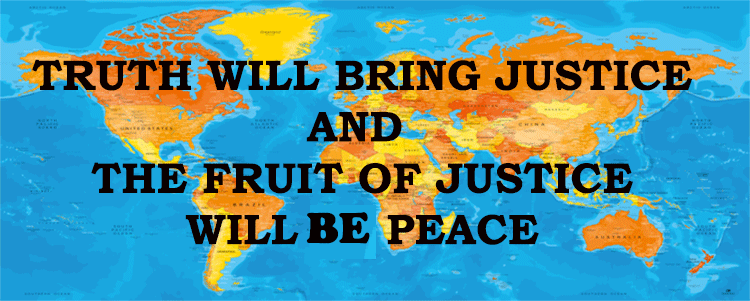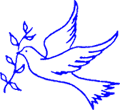READING HALLTHE DOORS OF WISDOM |
 |
 |
 |
PRINCE HENRY THE NAVIGATOR
XV
THE AZORES.1431-1460.
He have now come
very nearly to the end of the voyages that are described in the old Chronicle
of the Discovery and Conquest of Guinea, and setting aside the story of the
famous Venetian Cadamosto, this is also the end of
the African mainland-coasting of Henry’s seamen. Though he did not die till
1460, and we have now only reached the year 1448, for Azurara’s solemn catalogue of negroes brought to Europe is reckoned only up to that year—"nine
hundred and twenty-seven who had been turned into the true path of salvation”,—yet
there is no more exploration in the last ten years of Henry's life worth
noting, except what falls into this and two of the following chapters.
The first of these
is Cadamosto’s own record of his two voyages along
the Guinea coast, in which he is supposed to have reached Cape Palmar, some five
hundred miles beyond Cape Verde, and certainly reached the Gambia, whose great
mouth, “like an arm of the sea”, is well described in his journal.
The second is the “true
account of the finding of the Cape Verde islands by Diego Gomez, servant of Don
Henry”, who writes the story of the Prince’s death and was as faithful a
servant as he had at his Court. But there is one other chapter of the exploration
directed from Sagres and described by Azurara, which must find its place, and is best spoken of
here and now, in the interval between the two most active periods of African
coasting voyages. This is the story of the colonisation of the Azores, of the Western or Hawk islands, known to map-makers at least as
early as 1351, for they figure clearly enough on the great Florentine chart of
that year, though not reclaimed for Europe and Christendom till somewhere about
1430. These islands were found, says a legend, on the Catalan map of 1439, by
Diego de Sevill, pilot of the King of Portugal, in
1427. But these islands were after all only two groups of the Archipelago, and
the rediscovery or finding of the rest fell between the years 1432 and 1450.
The voyage of
Diego de Sevill and Gonzalo Velho Cabral to the
Azores, that is to the island of St. Mary and the Formigas,
has been alluded to as among the earliest of Prince Henry's successes. But as
it was out of this first attempt that the discovery of the whole group
resulted, it has been necessary to refer to it again. Cabral, rewarded by his
lord with the gift of his discoveries and living in St. Mary’s island as Captain
Donatory or Lord of the Land, was in charge of the colonisation of the islands he had already found, and of as many others as might come to
light. He spent three years (1433-6) collecting men and means in Portugal and
then settled in the Western Isles with some of the best families in this
country.
With this,
discovery seemed to have come to a standstill, but years after, somewhere about
1440-1 an odd chance started exploration westward once more. There was a hunt
after a runaway slave, a negro, of course, from the continent, who had escaped
to the top of the highest mountain in St. Mary. The weather was of the
clearest, and he fancied that he saw far off on the horizon the outline of an
unknown land. Was it another island? He knew his masters were there as
explorers quite as much as colonisers, and he must
often have heard their talk about the finding of new lands, and the will of
their Lord the Prince that those new lands should at all costs be found, was no
secret. That will had sent them there; that same will would secure their
slave's pardon, if he came back from hiding with the news of a real discovery.
So he reasoned to
himself; and he was right. The Prince, hearing the news, instantly consulted
his ancient maps and found that these hinted at lands in the same direction as
the slave had pointed out. He ordered Cabral to start at once in search of
them. Cabral tried and missed. Then came a wonderful test of Henry’s knowledge;
he who had never been within a thousand miles of the place, proved to his
captain that he had passed between St. Mary and the unknown land, and
correcting his course sent him out again, to seek and to find.
On the 8th of May,
1444, the new island was found on the day of the apparition of St.
Michael," and named after the festival. It is our modern St. Michael of
the Oranges.
As with the other
islands so with this, colonisation followed
discovery. On the 29th of September, 1445, Cabral returned with Europeans,
having before left only a few Moors to open up the country. Now on his return
he found these wretched men frightened almost to death by the earthquakes that
had kept them trembling since they first landed. “And if they had been able to
get a boat, even the lightest, they would certainly have escaped in it”. Cabral’s
pilot also, who had been with him before to that same island, declared that of
the two great mountain peaks which he had noticed at the two ends of the
island, east and west, only the Eastern was now standing. The slang name of Azores
or Hawks now began to take the place of the old term of Western islands, from
the swarms of hawks or kites that were found in the new discovered St. Michael,
and in the others which came to light soon after. For the Third Group, Terceira,
was sighted between 1444-50, and added to the Portugal that was thus creeping
slowly out towards the unknown West, as if in anticipation of Columbus,
throwing its outposts farther and farther into the ocean, as its pioneers grew
more and more sure of their ground outside the Straits of Gibraltar. Some
seamen of Prince Henry's, returning from Guinea to Spain, some adventurer
trying to win fame for himself with the Lord Infant" some merchants sent
out to try their luck on the western side as so many had tried on the southern,
some African coasters driven out of sight of land by contrary winds;—it may
have been any of these, it must have been some one of them, who found the rest
of the Azores, Terceira or the island of Jesus, St. George, Graciosa, Fayal,
Flores, and Corvo.
Who were the
discoverers is absolutely unknown. At this day we have only a few traces of the
first colonisation, but of two things we may be
pretty certain. First, that the Azores were all found and colonised in Henry's lifetime, and for the most part between 1430 and 1450. Second, that
no definite purpose was formed of pushing discovery beyond this group across
the waste of waters to the west, and so of finding India from the left"hand. Henry and all his school were quite
satisfied, quite committed, to the south-east route. By coasting round the
continent, not by venturing across the ocean, they hoped and meant to find
their way to Malabar and Cathay. As to the settlement of these islands, a copy
is still left of Henry's grant of the Captaincy of Terceira to the Fleming
Jacques de Bruges.
The facts of the
case were these. Jacques came to the Prince one day with a little request about
the Hawk islands—that “within the memory of man the aforesaid islands had been
under the aggressive lordship of none other than the Prince, and as the third
of these islands called the island of Jesu Christ, was lying waste, he the said
Jacques de Bruges begged that he might colonise the
same. Which was granted to him with the succession to his daughters, as he had
no heirs male”
For Jacques was a
rich Fleming, who had come into the Prince's service, it would seem, with the
introduction of the Duchess of Burgundy, Don Henry’s niece. Since then he had
married into a noble house of Portugal, and now he was offering to take upon
himself all the charges of his venture. Such a man was not lightly to be passed
over. His design was encouraged, and more than this his example was followed.
An hidalgo named Sodré—Vincent Gil Sodré—took his family and adherents across to Terceira, the
island of Jesu Christ, and from thence went on and settled in Graciosa, while
another Fleming, Van der Haager, joining Van der
Berge or De Bruges in Terceira with two ships “fitted out at his own cost and
filled with his own people and artisans, whom he had brought to work as in a
new land”, tried though unsuccessfully to colonise the island of St. George.
The first Captain
Donatory of Fayal was another Fleming—Job van Heurter,
Lord of Moerkerke—and there is a special interest in
his name. For it is through him that we get in 1492 the long and interesting
notice of the first settlement of the Azores on the globe of Martin Behaim, now at Nuremberg, the globe which was made to play
such a curious part, as undesigned as it was ungenerous, in the Columbus
controversy.
“These islands”,
says the tablet attached to them on the map, “these Hawk islands, were colonised in 1466, when they were given by the King of
Portugal to his sister Isabel, Duchess of Burgundy, who sent out many people of
all classes, with priests and everything necessary for the maintenance of
religion”. So that in 1490 there were there some thousands of souls, who had
come out with the noble knight, Job de Heurter, my
dear father-in-law, to whom the islands were given in perpetuity by the
Duchess.
“Now in 1431,
Prince Henry provisioned two ships for two years and sent them to the lands
beyond Cape Finisterre, and they, sailing due west for some five hundred
leagues, found these islands, ten in number, all desert without quadrupeds or
men, only tenanted by birds, and these so tame that they could be caught by the
hand. So they called these 'the Islands of the Hawks' (Azores). And next year
(1432), by the King's orders, sixteen vessels were sent out from Portugal with
all kinds of tame animals, that they might breed there”.
Of the first
settlement of Flores and Corvo, the two remaining
islands of the group, still less is known, but in any case it seems not to have
been fully carried out till the last years of the Prince's life, possibly it
was the work of his successor in the Grand Mastership of the Order of Christ,
which now took up a sort of charge to colonise outlying and new discovered lands. For among the Prince's last acts was his
bequest of the islands, which had been granted to himself by his brother, King
Edward, in 1433, to Prince Ferdinand, his nephew, whom he had adopted with a
view of making him his successor in aims as well as in office, in leading the
progress of discovery as well as in the headship of the Order of Christ.
XVITHE TROUBLES OF THE REGENCY AND THE FALL OF DON PEDRO.1440-1449.
|
 |
 |
 |
 |
 |
 |